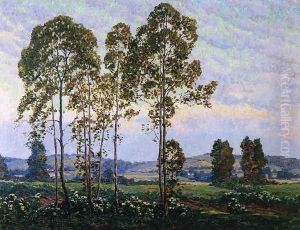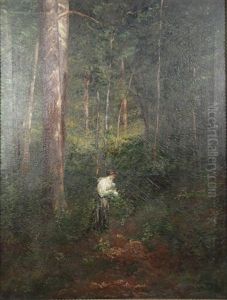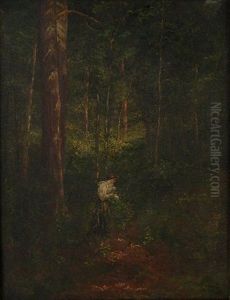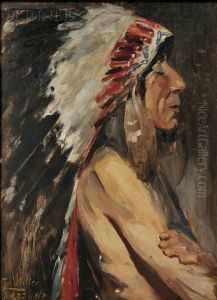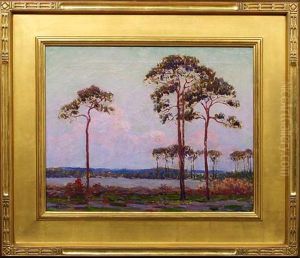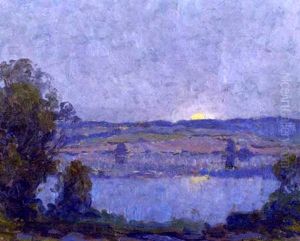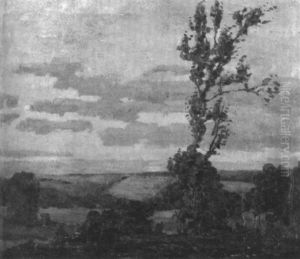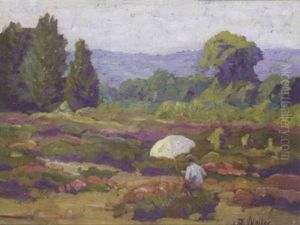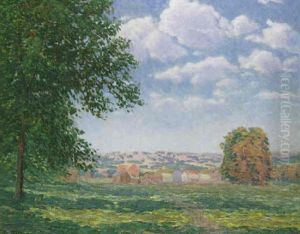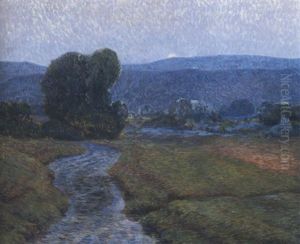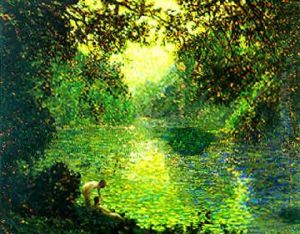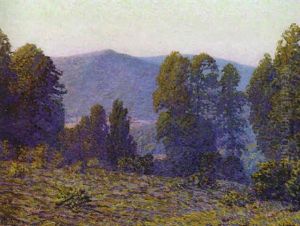Christian J. Walter Paintings
Christian J. Walter was an American artist, known primarily for his works depicting Native American subjects and Southwestern landscapes. Born in Louisville, Kentucky, in 1872, Walter showed an early talent in art which led him to pursue formal training. His artistic journey took him to various places, including Europe, where he studied at the Royal Academy in Munich, Germany. This period was crucial for his development as an artist, giving him exposure to European painting techniques and the works of Old Masters.
After returning to the United States, Walter settled in the Southwest, where he became deeply influenced by the region's distinctive light, color palette, and the cultural presence of Native American peoples. His most renowned works are intimate portraits of individuals from various tribes, including the Taos Pueblo in New Mexico. Walter's portraits are celebrated for their dignified representation of his subjects, often capturing the humanity and the spiritual essence of the individuals he depicted.
Walter was part of the Taos Society of Artists, a group that played a significant role in creating an American art independent of European traditions, focusing on the unique aspects of American life and landscapes. Walter's work, while not as widely known as some of his contemporaries, contributed to the appreciation of Native American culture and the American Southwest as a subject of fine art. Throughout his career, Walter remained dedicated to his vision, and his paintings are characterized by a realistic yet sensitive style, with a particular attention to the interplay of light and shadow.
Christian J. Walter passed away in 1938, leaving behind a legacy that has been appreciated in the context of American art history, particularly within regional circles. His works continue to be exhibited and can be found in various art collections, museums, and galleries throughout the United States. Walter's dedication to portraying the people and landscapes of the Southwest has made a lasting impression on the art world, contributing to the narrative of American art in the early 20th century.
